Mexican religious festivals are lively celebrations rooted in history, faith, and culture. They are not just days off; they show how Mexico blends indigenous traditions with European Catholicism. These events bring joy, reflection, and community time, with rituals, bright decorations, music, dance, and plenty of food.
These festivals are key parts of Mexican identity. Each one, from quiet processions to big street parties, tells the story of a country that has brought different traditions together. From small-town fiestas to large national events, they reveal Mexico’s strength, creativity, and strong faith.
Origins and Historical Influences
Mexican religious festivals grew from a mix of pre-Hispanic beliefs and the Catholic practices brought by the Spanish in the 16th century. The Catholic Church often matched Christian feast days with existing local rituals instead of wiping them out.
You can see this mix in many famous celebrations. Day of the Dead lines up with All Saints’ and All Souls’ Days, yet its roots go back to Mesoamerican rituals that honored ancestors. Posadas during the Christmas season echo older local customs, which helped people accept the new faith. Over time, respect for nature and ancestors blended with Christian belief, creating traditions that are unmistakably Mexican.
Religious Diversity in Mexican Celebrations
Mexico is mostly Catholic-about 80% identify as Catholic, and close to 90% if you include other Christian groups. Many people who are not very observant still join the festivals because they carry deep cultural meaning.
Indigenous communities add many layers to these events. In places like Oaxaca and Chiapas, you will find ancient dances, languages, and rituals joined with Catholic rites. This creates a rich mix of faith and custom, where shared themes like community, memory, and belief appear in many local forms.
How Religious Festivals Shape Mexican Culture
Religious festivals are central to life in Mexico. They bring people together and create shared moments of celebration and remembrance. Families prepare food, decorate, and make art for these days.
They also protect heritage by passing down stories, songs, dances, and recipes. The images and symbols-from Día de Muertos altars to Carnaval costumes-are widely recognized as Mexican and feed national pride. These festivals also support local economies through tourism and the sale of crafts and foods. On a deeper level, they offer a way to think about life, death, happiness, and grief that many people share.

Religious Festivals by Month: Annual Calendar
Important Religious Celebrations in January
January continues the spirit of Christmas with special observances. New Year’s Day usually starts with prayers and time with family. The main religious date is Three Kings’ Day (Día de Reyes) on January 6, which honors the Magi who brought gifts to baby Jesus. Children often receive presents and leave a shoe out to be filled. Families share Rosca de Reyes, a crown-shaped bread with a tiny baby Jesus hidden inside. Whoever finds it hosts a party on Candlemas Day.
Later in the month, Morelia holds a long celebration for the Immaculate Conception. On January 17, many people decorate pets and livestock for blessings during the fiesta of San Antonio Abad. Chiapa de Corzo in Chiapas starts its Fiesta Grande, honoring Saint Sebastian and featuring the famous Parachicos dancers.
Major February Religious Events
Candlemas (Día de la Candelaria) on February 2 closes the Christmas season. Families enjoy tamales and atole, and the person who found the baby Jesus in the Rosca de Reyes hosts the meal. Candlelit processions and dancing are common. Some customs reflect pre-Columbian harvest rites.
Next comes Carnival (Carnaval), the five days before Ash Wednesday. It is a time of parades, costumes, and parties before Lent begins. Mazatlán and Veracruz hold some of the largest Carnivals, often ending with the burning of an effigy once linked with Judas Iscariot.
Highlights of March and April: Lent and Easter
Lent begins with Ash Wednesday and leads to Holy Week (Semana Santa), from Palm Sunday to Easter Sunday. It is one of Mexico’s most important religious periods, with fasts, prayer, and church services.
Key moments include:
- Maundy Thursday: Visit of the Seven Houses, with people praying in seven churches.
- Good Friday: Processions and Passion plays, such as the large event in Iztapalapa, Mexico City.
- Easter Sunday: Joyful services celebrating the Resurrection.
Many schools and businesses close, and families often travel.
Significant Festivities in May and June
May 1 is Labour Day, a national holiday for gatherings and marches. May 3 is the Day of the Holy Cross, widely observed by construction workers who decorate crosses at work sites and hold small parties.
June features patron saint fiestas. In San Miguel de Allende, the Day of the Crazy People (Día de los Locos) happens on the Sunday near June 13 (Saint Anthony of Padua’s day). It starts with a church service and then a playful parade with costumes. Around June 15, the Papantla Flyers perform a ritual for fertility and harvest, showing ancient indigenous belief.
Festivals in July through September
July brings the Guelaguetza in Oaxaca on the last two Mondays of the month. It is a major celebration of indigenous culture with dances, music, and dress from many communities. It began as a Zapotec gathering in honor of the Corn Goddess and centers on mutual help and sharing.
September focuses on Independence Day, but local religious events still appear. In Cholula, Puebla, the Fiesta de San Mateo on September 20 honors Saint Matthew with Mass, dances, and often the voladores performance. Even during patriotic weeks, spiritual traditions remain visible.
Religious Occasions in October and November
Día de Muertos (Day of the Dead) on November 1-2 is Mexico’s most famous religious celebration. People believe the dead can visit during this time. Families build altars (ofrendas) with photos, favorite foods, drinks, marigolds, candles, and sugar skulls to welcome them. November 1 is for children who have passed (Día de los Angelitos), and November 2 is the main day, with cemetery visits, music, and Pan de Muertos.

Before that, Toluca hosts the Feria del Alfeñique from mid-October to early November, where candy makers create sugar skulls and figures for ofrendas. October 12, Día de la Raza, marks the mix of native and Spanish heritage. While not a church feast, it reflects the history that shaped Mexico’s spiritual life.
December’s Celebrations: Guadalupe, Posadas, and Christmas
On December 12, Mexico honors the Virgin of Guadalupe, the country’s patron saint. Millions of pilgrims go to the Basilica in Mexico City, where the Virgin is said to have appeared to Juan Diego in 1531. The day brings processions, songs, and a large Mass.
From December 16 to 24, Las Posadas reenact Mary and Joseph’s search for shelter. People walk with candles, sing, and knock on doors until a home welcomes them. There are piñatas, special foods, and gatherings. Christmas Eve (Nochebuena) is the main family night with dinner, gifts, and often Midnight Mass. Christmas Day (Navidad) is quiet family time. The season continues with Innocents Day on December 28, a day for jokes, and ends with Three Kings’ Day in early January.
Key Mexican Religious Festivals and Their Significance
Día de Muertos (Day of the Dead)
Observed from October 31 to November 2, Día de Muertos is lively and full of color. It honors loved ones who have died. Its roots are ancient and later joined with Catholic All Saints’ and All Souls’ Days.
Many believe the line between the living and the dead grows thin during these days. Families set up ofrendas at home and at graves with photos, favorite foods, candles, marigolds, sugar skulls, and pan de muerto. Parades, costumes, and music fill streets and cemeteries. The celebration shows a common Mexican view: death is part of life and can be faced with love and memory.
Semana Santa (Holy Week)
Semana Santa, from Palm Sunday to Easter Sunday, marks the passion, death, and resurrection of Jesus Christ. People use this time for prayer and reflection.
Communities hold processions, recreate the Via Crucis, and stage Passion plays, including the large event in Iztapalapa. On Maundy Thursday, many visit seven churches. Schools and many businesses close, so families often gather or travel while also joining church events.
Día de la Virgen de Guadalupe
December 12 celebrates the Virgin of Guadalupe and recalls her appearance to Juan Diego in 1531 on Tepeyac Hill. Her image on his cloak is kept at the Basilica in Mexico City.
This day is central to Mexican Catholic life and reflects the joining of indigenous and Spanish traditions. Pilgrims come from across the country, some on foot. The day is filled with processions, songs, dances, and Mass. Her dark-skinned image is a national symbol of comfort and hope.
Las Posadas and Navidad (Christmas and Posadas Processions)
From December 16 to 24, Posadas reenact Mary and Joseph’s search for lodging. Children often lead, dressed as angels, Mary, and Joseph. The group walks with candles, sings, and asks for shelter until one home admits them.
Inside, people break piñatas, eat tamales, and drink ponche navideño. These nights bring together Mexican and Spanish traditions in a simple, welcoming way. On Christmas Eve, families share a big meal, give gifts, and often attend Midnight Mass. December 25 is a calm day for family visits and leftovers.
Día de Reyes (Epiphany / Three Kings’ Day)
On January 6, Día de Reyes honors the visit of the Magi to baby Jesus. Many Mexican children get their main gifts on this day and place a shoe by the window to receive them.
Families share Rosca de Reyes, an oval sweet bread decorated with candied fruit to look like a crown. Small baby Jesus figures are baked inside. Whoever finds one hosts a tamale party on Candlemas (February 2). The day brings family time, hot chocolate, and happy children.
Candelaria (Candlemas)
Candlemas on February 2 closes the Christmas season. It recalls the presentation of Jesus at the Temple and the purification of Mary. In Mexico, some customs echo older harvest rituals.
Many towns hold candlelit processions and dancing. Families bring baby Jesus figures to church for blessings. The person who found the figurine in the Rosca de Reyes hosts a meal with tamales and atole. Communities mark this shift from Christmas season toward Lent.
Traditional Indigenous Religious Festivals in Mexico
Nahua and Maya Rituals
Nahua and Maya communities keep many traditions alive. Nahua festivals often follow farming cycles, especially corn harvests, showing their close bond with the land. Music, dance, and crafts like amate paper and beadwork carry spiritual meaning.
The Maya of the Yucatán Peninsula, Belize, and Guatemala maintain ceremonies for ancestors and deities. Offerings, incense, and special dances help continue an ancient view of the cosmos alongside newer practices. Their languages, clothing, and rituals remain strong.
Guelaguetza and Oaxacan Religious Traditions
Oaxaca has a strong indigenous presence, seen clearly in the Guelaguetza festival on the last two Mondays of July. Communities present dances, music, and dress from across the state, including Zapotec and Mixtec groups. It began as a spiritual event honoring the corn goddess and the idea of mutual support.
Many local fiestas in Oaxaca honor Catholic saints while using pre-Hispanic elements. The Zapotec continue to show respect for ancestors through language, clothing, and festivals. The Mixtec, known for gold work and codices, join indigenous and Catholic beliefs in ceremonies tied to the land and farming.
Janal Pixán and Day of the Dead Variations
Day of the Dead varies across Mexico. In the Yucatán, the Maya version is Janal Pixán, “feeding of the souls.” It also runs from October 31 to November 2 and focuses on preparing special foods to welcome ancestors. The tone is often quieter than in other regions.
Families make dishes like mucbipollo (pib), a large tamal cooked underground in banana leaves. Altars display these foods, candles, and photos. In Mérida, the “Paseo de las Ánimas” leads people from the main cemetery through the old city with music, altars, and food stands. These regional forms show how indigenous beliefs shape Mexican religious life today.
Other Regional Indigenous Ceremonies
The P’urhépecha in Michoacán hold many community festivals and are known for copper work, woodworking, and a distinctive Day of the Dead style. Their language and Pirekua music, recognized by UNESCO, blend indigenous, European, and African sounds.
In Sonora, the Yaqui and Mayo perform the Deer Dance (La Danza del Venado), a striking ritual about the deer hunt and the bond between people and nature. Dancers wear antlers and special dress. These ceremonies, often outside mainstream tourism, show the depth and variety of Mexico’s spiritual life.
Rituals, Symbolism, and Cultural Expressions
Common Religious Rituals: Processions, Altars, and Pilgrimages
Many festivals share core practices that bring people together and express faith:
- Processions: from candlelit Posadas walks to Holy Week parades and Guadalupe pilgrimages.
- Altars (ofrendas): especially during Día de Muertos, with photos, foods, drinks, candles, and marigolds to welcome loved ones who have passed.
- Pilgrimages: millions travel to the Basilica of Guadalupe and other sacred sites each year.
These acts, at home and in public, are key signs of belief and community bonds.
Music and Dance Traditions in Religious Festivals
Music and dance tell stories of faith and history. Mariachi, with trumpets, violins, and guitars, often accompanies celebrations. Ranchero songs also play a role.
Many dances have indigenous roots. The Danza de los Voladores has four men spiraling from a tall pole to thank the gods for harvest. The Danza de los Parachicos in Chiapa de Corzo honors patron saints with masks, ribbons, and maracas. Even the Jarabe Tapatío (Mexican Hat Dance) shows pride and courtship. These traditions connect generations and strengthen community ties.

Traditional Foods and Iconography
Food carries deep meaning. During Día de Muertos, sugar skulls and pan de muerto point to the cycle of life and death. Families also cook the favorite dishes of those they honor. Candlemas brings tamales and atole, tying faith to the harvest. Christmas meals often include turkey, cod stew, romeritos, and tamales.
Religious images are everywhere. The Virgin of Guadalupe appears in homes, churches, and public places as a symbol of faith and identity. Day of the Dead skulls and catrinas make death less frightening through humor and style. Papel picado banners, marigold-filled altars, and detailed costumes give festivals a look that speaks clearly about belief and culture.
UNESCO-Recognized Mexican Religious Traditions
Día de los Muertos as Intangible Cultural Heritage
UNESCO named Día de los Muertos an Intangible Cultural Heritage of Humanity in 2008. The recognition shows how important this tradition is to Mexico’s identity and creativity. It blends pre-Hispanic and Catholic practices and offers a unique way to remember the dead.
Altars with marigolds, candles, and favorite foods, along with lively parades and cemetery gatherings, bring people together and strengthen social bonds. The UNESCO listing helps protect and share this tradition so it continues and more people can learn from it.
Danza de los Voladores and Parachicos
The Danza de los Voladores, from the Totonac people of Veracruz, became an Intangible Cultural Heritage in 2009. Four men descend from a 30-meter pole while a fifth plays flute and drum at the top. The ceremony gives thanks for fertility and harvest and points to harmony between people and nature.
The Danza de los Parachicos, part of the Fiesta Grande in Chiapa de Corzo, received the same status in 2010. Dancers in carved masks, ribbons, and maracas fill the streets to honor saints, especially Saint Sebastian. These living traditions show the depth of Mexico’s indigenous and mixed cultures.
Practical Advice for Experiencing Mexican Religious Festivals
Cultural Etiquette and Respectful Participation
A visit to a Mexican religious festival can be unforgettable. For a meaningful and respectful time, follow local customs:
- Dress modestly for churches and processions (cover shoulders and knees).
- Be discreet with photos and ask before taking close-ups, especially during serious moments.
- Respect personal space and the flow of events.
- Accept food or drink kindly if offered.
- Learn simple Spanish phrases like “gracias” and “por favor.”
Remember these gatherings are sacred for many people, not just shows for visitors.
Best Places and Times for Festival Visits
Popular choices include:
- Día de Muertos (Nov 1-2): Oaxaca City and Pátzcuaro for altars, cemeteries, and local customs. Mexico City hosts a large parade.
- Semana Santa (Mar/Apr): Iztapalapa in Mexico City for a major Passion play; San Miguel de Allende and Taxco for moving processions.
- Virgin of Guadalupe (Dec 12): The Basilica in Mexico City for massive pilgrimages.
- Las Posadas (Dec 16-24): Small towns offer intimate processions; Mexico City, Guanajuato, and Oaxaca also stand out.
- Carnaval (Feb/Mar): Mazatlán and Veracruz for grand parades and street parties.
Plan around these dates and places to experience the most renowned celebrations.
Safety and Travel Recommendations
Festivals are friendly and welcoming, but basic care helps:
- Research your destination and stay aware of your surroundings.
- Keep valuables secure; consider a money belt in crowded areas.
- Stay hydrated and use sun protection.
- Book flights and lodging early; popular hotels and villas fill fast.
- Expect traffic and road closures; plan extra time.
- Trusted tour operators or local guides can add context and reduce stress.
Enjoy the energy, and keep your safety and well-being in mind.
Frequently Asked Questions About Mexican Religious Festivals
What festivals are the most widely celebrated in Mexico?
By scale and national participation, three stand out. Día de los Muertos (Nov 1-2) is famous worldwide and deeply meaningful across Mexico. The Christmas season, especially Las Posadas (Dec 16-24) and Christmas Eve (Dec 24), brings family gatherings and church services. Holy Week (Mar/Apr) draws large crowds for processions and Passion plays and is also a prime time for family travel.
Are Mexican religious festivals open to visitors?
Yes. Visitors are welcome at most festivals, and people appreciate sincere interest in their customs. Larger events like Día de Muertos in Oaxaca and Holy Week in colonial cities are well set up for guests.
Come with respect. Dress modestly, act politely, and ask before taking photos of people or during serious moments. Try local foods and follow local habits. This makes the experience better for you and for the community.
How do religious and civic holidays differ in Mexico?
Civic holidays-such as Independence Day (Sept 16), Revolution Day (Nov 20), and Constitution Day (Feb 5)-honor national history and usually bring official days off, parades, and ceremonies.
Religious holidays follow the Catholic calendar and often include indigenous elements. Some, like Good Friday and Christmas Day, are public holidays. Others, like Día de Muertos, are widely observed but may not be official days off everywhere. Civic holidays celebrate the state; religious festivals celebrate faith and community ties.
Which festivals have pre-Hispanic roots?
Several major festivals come from ancient traditions. Día de Muertos has deep Mesoamerican roots among the Aztecs, Maya, and Zapotec. The Guelaguetza began as a Zapotec ceremony for the corn goddess and community sharing. The Danza de los Voladores is an old Totonac ritual linked to fertility and the elements. Even Candlemas borrows parts of older harvest customs. These events show how indigenous beliefs continue within Mexican life today.

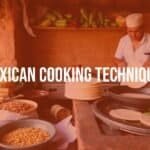


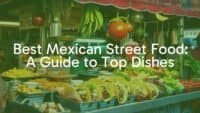
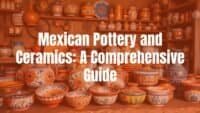

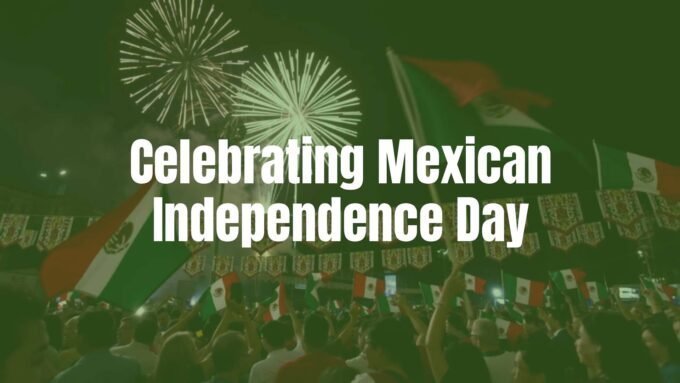
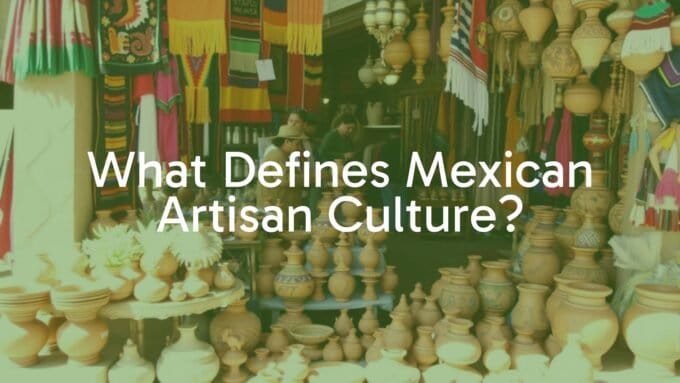
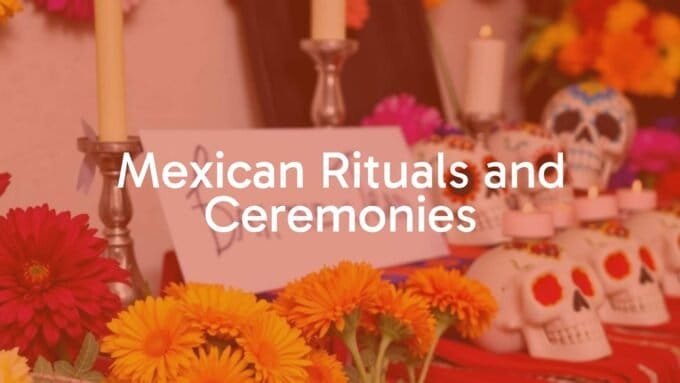
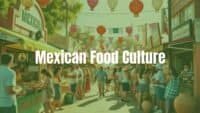
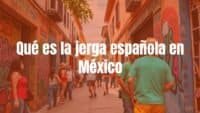
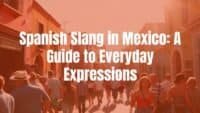
Leave a comment